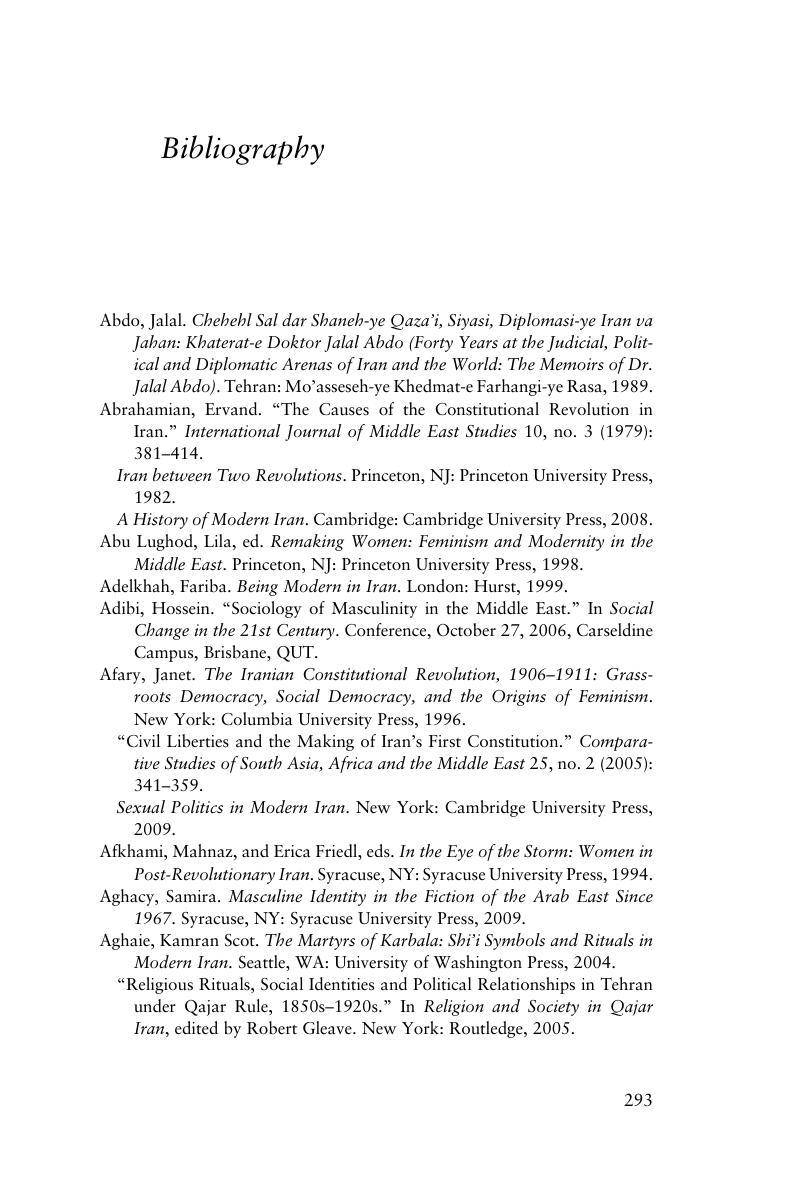Book contents
- Iranian Masculinities
- Iranian Masculinities
- Copyright page
- Dedication
- Contents
- Figures
- A Note on Transliteration
- Acknowledgments
- Introduction
- 1 Ideals and Practices of Masculinity in Qajar Society
- 2 Western Knowledge and Education and the Emergence of a New Iranian Masculinity in the Late Nineteenth Century
- 3 Gendering the Nation
- 4 Farangimaabs and Fokolis
- 5 Marriage Reform in Interwar Iran
- 6 Male Dress Reforms under Reza Shah
- 7 “Strong Spirits, Strong Arms, Strong Hearts”
- Conclusions
- Bibliography
- Index
- References
Bibliography
Published online by Cambridge University Press: 18 March 2019
- Iranian Masculinities
- Iranian Masculinities
- Copyright page
- Dedication
- Contents
- Figures
- A Note on Transliteration
- Acknowledgments
- Introduction
- 1 Ideals and Practices of Masculinity in Qajar Society
- 2 Western Knowledge and Education and the Emergence of a New Iranian Masculinity in the Late Nineteenth Century
- 3 Gendering the Nation
- 4 Farangimaabs and Fokolis
- 5 Marriage Reform in Interwar Iran
- 6 Male Dress Reforms under Reza Shah
- 7 “Strong Spirits, Strong Arms, Strong Hearts”
- Conclusions
- Bibliography
- Index
- References
Summary

- Type
- Chapter
- Information
- Iranian MasculinitiesGender and Sexuality in Late Qajar and Early Pahlavi Iran, pp. 293 - 313Publisher: Cambridge University PressPrint publication year: 2019



